
This is me
Hi, I'm Rowan.
Below you’ll find my kanji journey—and how The Kanji Speedrun was born.
But firstー Do you want the short version or the full story? Choose below!
⚡ TL;DR – The Short Version
- Discovering Mnemonics: Introduced to kanji through Remembering the Kanji (RTK), learned to create personal and vivid mnemonics.
- Study Abroad Experience: A year in Japan revealed the limitations of rote memorization, leading me to share my personal mnemonics with classmates.
- Embracing SRS & Anki: Pairing Anki with Kodansha Kanji Learner's Course (KKLC) significantly boosted my learning speed due to accuracy of core meanings.
- Burnout & Recovery:: After mastering the recognition of 2,300 kanji in three months, I faced flashcard overload, inspiring a re-evaluation of methods.
- Kanji Logic: Through trial and error, I discovered some kanji “stick” naturally and don’t require intensive repetition.
- The Two-Phase System: Created a structured method—focusing on meaning first, then readings/writing later for efficiency.
- Strategic Reinforcement: Designed a feedback loop where curated vocabulary examples integrate newly learned kanji with previously studied ones, reinforcing connections and solidifying memory.
- Visual & Interactive Tools: Developed resources featuring mascots, font familiarization, and illustrations to make learning engaging.
- Why Speed First: I advocate for prioritizing recognition over writing to unlock reading fluency early on.
- Founding The Kanji Speedrun: I transformed my years of experimentation into a comprehensive, burnout-resistant kanji learning system.
📖 My Full Kanji Journey (The Long Version)
💡 How I Started
Like many learners, my first introduction to kanji memory techniques came from James Heisig’s Remembering the Kanji (RTK). I’m genuinely grateful for that book—it opened my eyes to the power of mnemonics and, over time, helped me develop the skill of crafting memory aids of my own. The concept of “learning the meaning first” truly changed the game for me, and the practice of creating stories for each character became second nature.
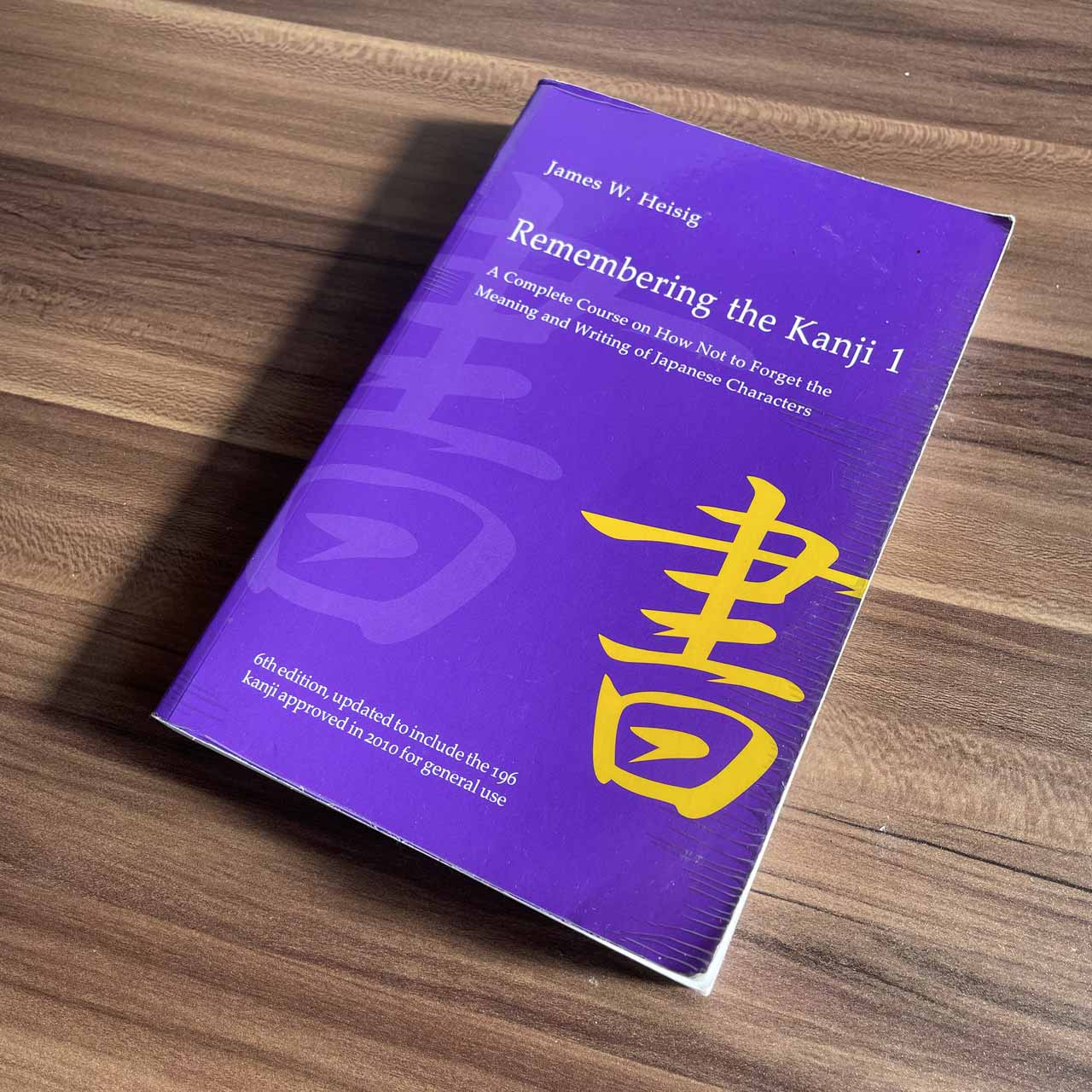
How it all began.
Of course, no single approach fits everyone. As I progressed, I sometimes found myself tripping over the more abstract or rigid meanings in RTK, and occasionally the mnemonic stories felt a bit forced for my taste. But far from being a dead end, those moments pushed me to start creating my own stories—mnemonics that honed my ability to be both creative and systematic. That process is what I’m using every day now as I build The Kanji Speedrun.
📝 Study Abroad & Traditional Methods
Later, during a year of study abroad in Japan, I encountered the traditional approach: endless writing drills and rote memorization. To my surprise, there was little mention in class of kanji parts or how they connected. My classmates struggled to keep up, so I shared what I’d learned about mnemonics and kanji “building blocks.” It helped, but at the end of the day, I realized the traditional approach was still too slow—only about 500 kanji were covered by the school in that year.

During my study abroad (2011), standing in front of the Three Giant Stones.
🔁 SRS, Anki, and The Burnout Trap
When I returned home, I discovered SRS and "The Forgetting Curve". I paired a digital flashcard app that uses SRS technologyー called Ankiー with a new kanji book I had heard about: The Kodansha Kanji Learner’s Course.
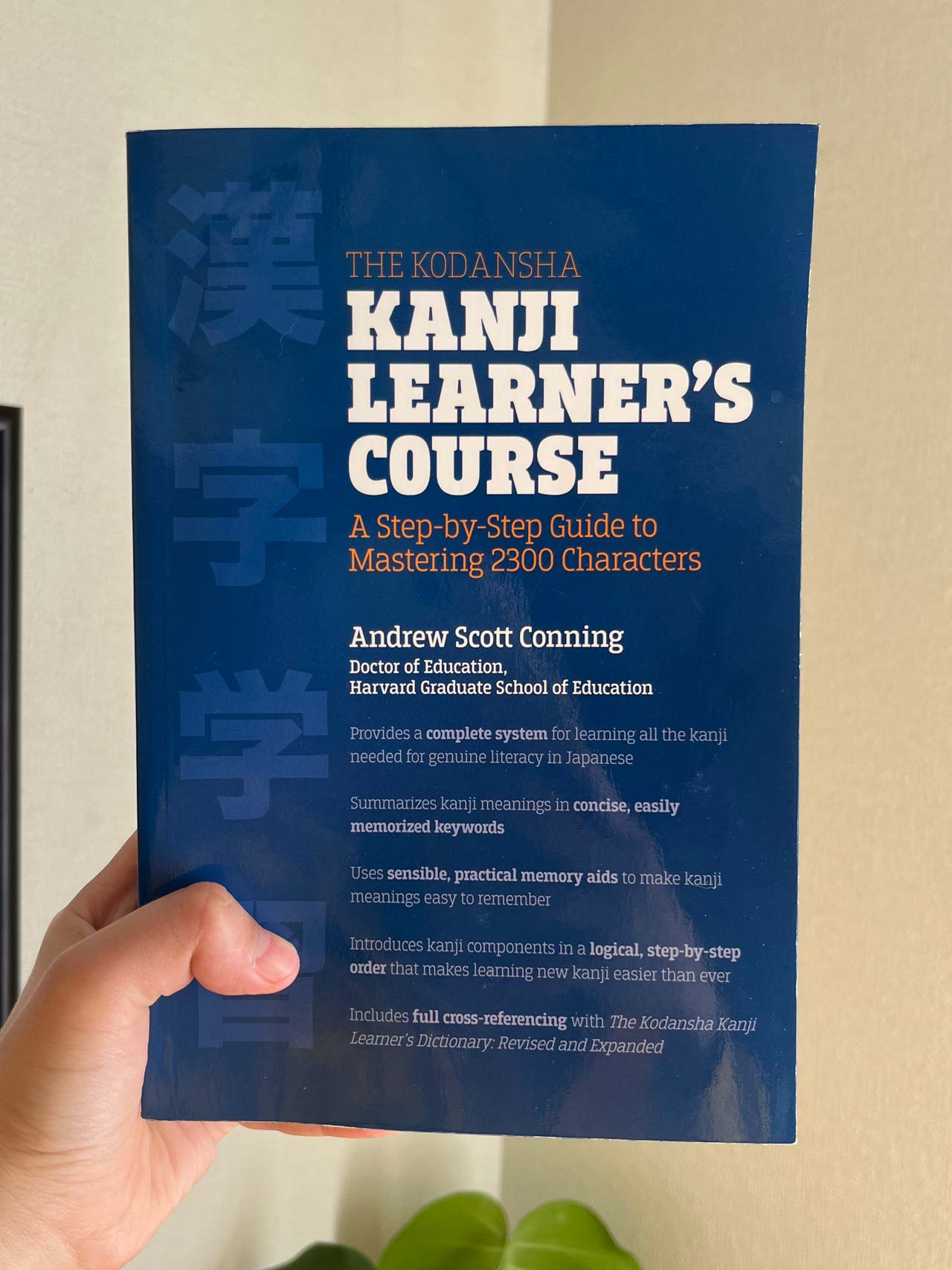
What I really liked about this book was how its “core meanings” often matched how kanji are actually used in compound words.
It showed me that kanji mnemonics don’t always have to be wild or cartoonish to work. In fact, when a mnemonic reflects the original logic behind a character—even loosely—it feels more natural and intuitive. You start to see how parts fit together and why a character means what it does. Once your brain senses that there’s a genuine pattern, it’s more likely to trust itー and this is powerful for memory.
Moving forward, I let go of the pressure to master writing and readings from day one, focusing instead on meaning and recognition—how each kanji’s core meaning applied to words—and my learning speed took off.
I was learning 25 kanji per day and learned 2,300 characters in just over three months. But I hit a new obstacle: flashcard overload. My Anki deck ballooned to over 400 reviews a day, and review became a slog. I started to burn out.
🧠 Learning Theory & How to Use This Site
Through years of trial and error, I realized something key: not every kanji needs to go into a spaced repetition system (SRS) like Anki. Some characters just “stick” because they’re logical, visual, or built from familiar parts. Think of a word like "doghouse". Once you know “dog” and “house,” do you really need to keep reviewing “doghouse” for the next year?

I know "bird"...I know "cage"...but what the heck is a "birdcage"?!
The Two-Phase System
That insight led me to develop a two-phase system:
Phase 1: Meaning & Recognition
Learn each kanji’s core meaning (with the help of vivid mnemonics), and check your memory using the built-in five-day review sheet. Only the kanji you forget (the “tough ones”) should go into Anki for extra SRS.
Phase 2: Readings & Writing
Once you’ve finished all Joyo kanji, circle back to start mastering readings and writing. By now, you’ve seen these characters in real life, and the process is much less overwhelming.
Learn more about the system here!
What We Offer
On this site, you’ll find:
- Memorable Mnemonics—revised over years of review.
- Visual Storytelling—every page features illustrations with our friendly mascots, Ken & Mei, to make each memory more “sticky.”
- Font Familiarization—toggle between textbook, handwritten, and print fonts, so you’re ready for real-world reading from the start.
- Review Grid System—self-test for five days to find which kanji "stick"...and which ones don't.
- Anki Integration—decks provided at the end of each chapter. You only need to study what you actually struggle with.
🏃♂️ Why Speed First, Writing Second
My core belief: speed and recognition come first. Writing, while valuable, is not required to build reading fluency, especially for tests like the JLPT. Recognition is what unlocks books, manga, signs, and screens. When you focus on recognizing kanji and understanding their meanings, writing comes much more easily later.
When learners start with writing, it slows everything down. Writing is a useful skill—but it's also time-intensive. By splitting the process into two sweeps, you maximize both speed and depth. Your first sweep is all about rapid recognition. In your second sweep—writing and readings—you consolidate and expand on everything you’ve already seen in the real world. This helps reinforce and polish what you've already learned.

Wait...I think I've seen this kanji before.
That second sweep is especially powerful. By the time you revisit the kanji for writing, you’ve likely seen them many times in real contexts—books, subtitles, apps, signs. At this stage, writing feels more natural. You’ve had time for the shapes and meanings to settle and could probably already rattle off a few words which use it! When you return to them with a writing goal, your brain already has a scaffold to build on. You’re not writing blind.
Plus, the second sweep gives you a chance to recover any kanji you might’ve forgotten along the way. It’s a more strategic and forgiving approach than trying to master everything in one go.
Writing the Kanji
Phase 2 will take The Kanji Speedrun to the next level—beyond single characters and deep into the world of kanji words. You’ll not only practice reading compound words but also discover the logic behind how their meanings fit together. By the time you arrive here from Phase 1, you’ll have a rock-solid foundation, ready to link meanings, readings, and usage with ease.
Writing is also an important part of Phase 2—think of it as pouring the final cement. You’ll strengthen your handwriting skills with tools like Skritter or Anki’s scratchpad. When you’re ready to fully master handwriting, I recommend Skritter. Review on mobile is fast, focused, and effective. I’ve used it for years and wouldn’t try to reinvent what it already does so well—it’s the perfect companion to The Kanji Speedrun approach.
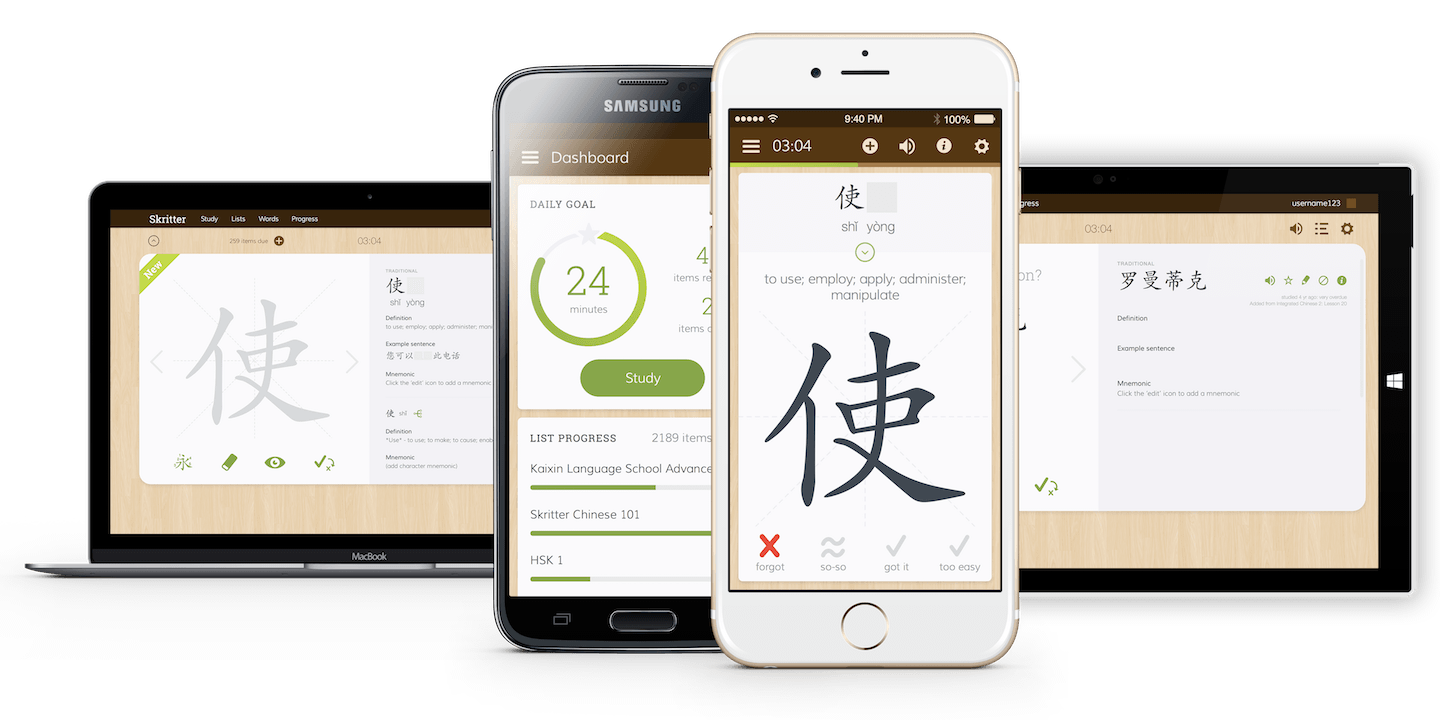
Learn more about Skritter here.
🔁 Built-in Reinforcement
When I began tutoring kanji, I saw how powerful it was for students to encounter a word combining a kanji they were learning with one they had already studied. It created what I like to call a “feedback loop,” reinforcing past knowledge while building new connections. That concept is now built into The Kanji Speedrun.
Each kanji page includes a short, curated list of example words, designed to reinforce kanji you’ve already learned. That means you’re always revisiting and reviewing earlier material in context.
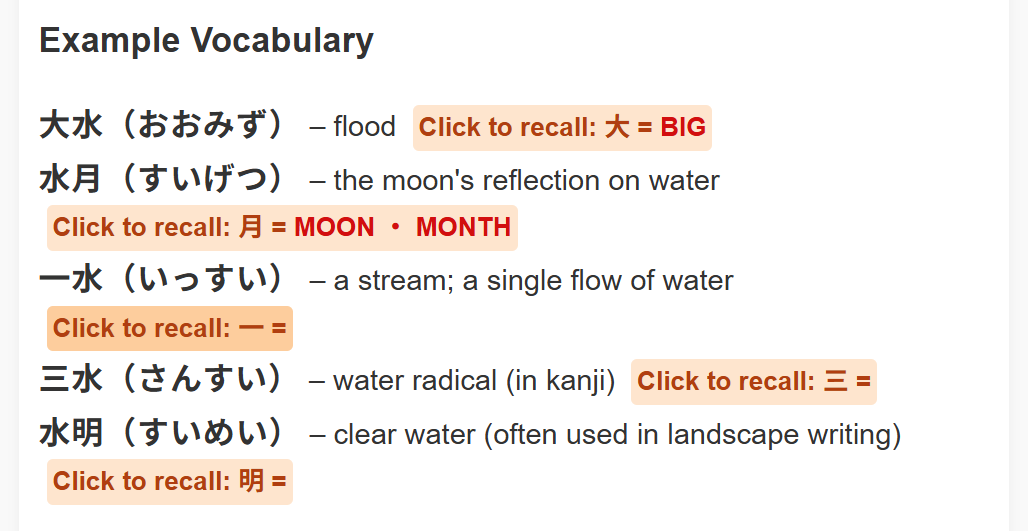
With our toggle system, you're not just learning— you’re looping knowledge back in.
Kanji meanings are hidden by default. Just click to reveal, so every session is like a mini quiz.
🖌️ Visual Storytelling & Font Familiarization
Every page features illustrations with our friendly mascots, Ken & Mei, to make each mnemonic more memorable. And, since kanji in the wild appear in many styles, you can toggle between textbook, handwritten, and print fonts—preparing you for anything.

Ken
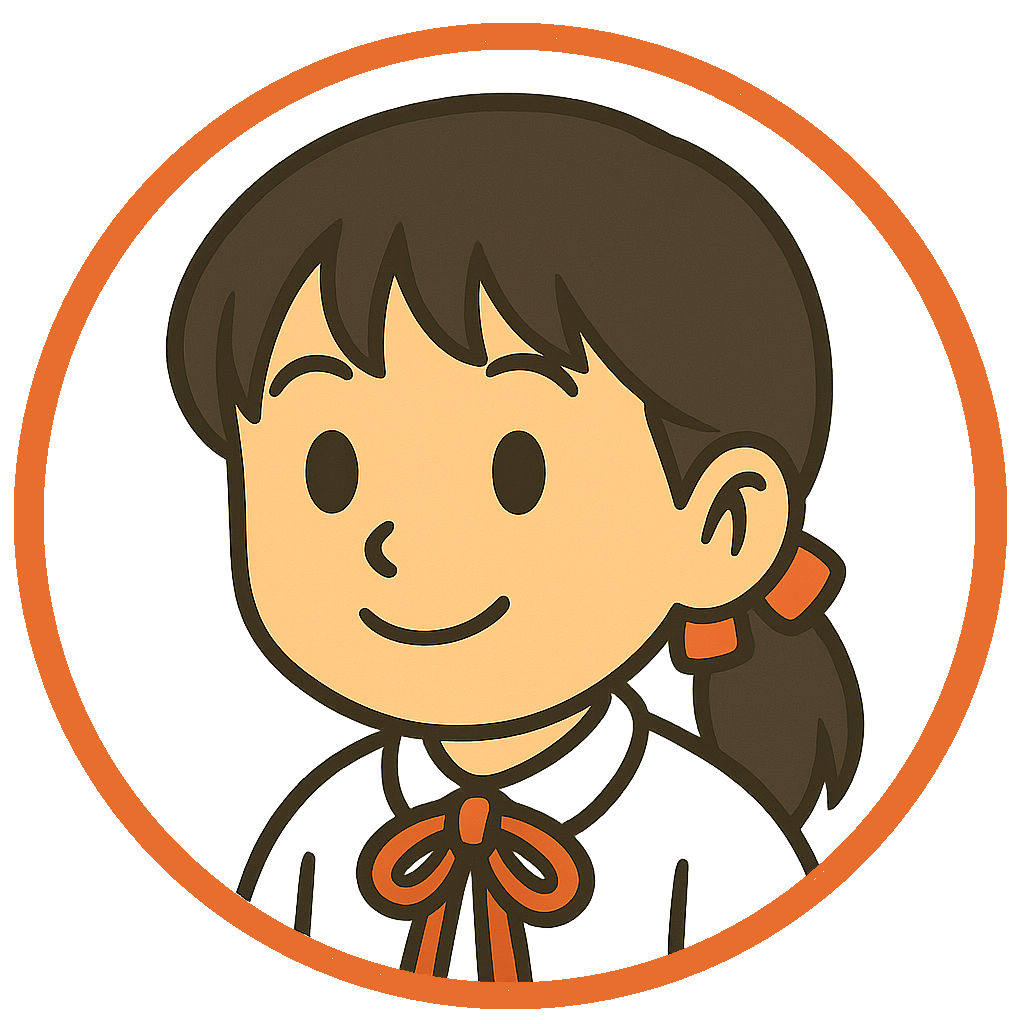
Mei
💡 A Project Years in the Making
Over time, with my own growing knowledge of how kanji are used, my mnemonics and other tools became more and more refined—until they no longer felt like a copy of any one method. I had created something distinct from the books and decks I’d started with.
The Kanji Speedrun is built on all that: everything I learned, borrowed, and improved over years of struggle and discovery. It’s not just a course—it’s a system designed to help you move faster, retain more, and avoid burnout. I hope it gives you the boost I wish I’d had.
❓ FAQ (Frequently Asked Questions)
🌐 Stay Connected
This site is just getting started, and it’s growing every week. If you’d like to follow along, check out our Linktree— it has all our socials.
You can also read our monthly progress updates to see behind-the-scenes notes and milestones.
Or, if you’d like to speak to us directly, you can send us an email: thekanjispeedrun@gmail.com☕ Support The Kanji Speedrun
If you’d like to support the project, you can do so on Patreon (for ongoing support), BuyMeACoffee (for a one-time tip), or simply by sharing the site with a friend.
Even if you don't study Japanese, you can still root for me! Your support keeps new chapters coming—thank you so much for being here at the start.